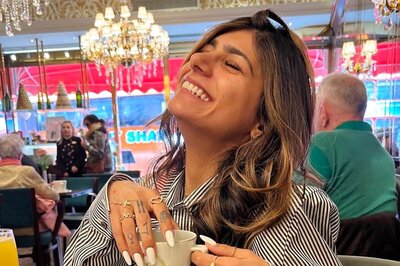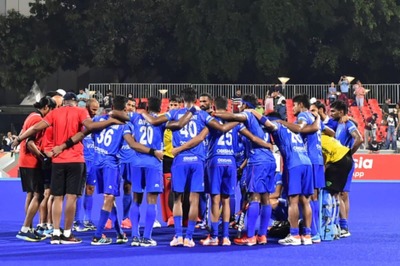
views
BANGALORE: A priest at the temple says that only three of its kind are present across the nation. A Google search pegs the number at five. Regardless of its contemporaries, its location — situated on the banks of the river Cauvery, where the river course makes a detour from south to east right in front of it — should make it a one of its kind. Nestled in the heart of the erstwhile Kongu kingdom, the Trimurthy Temple at Kodumudi in Erode district, Tamil Nadu, figures among the 274-odd Siva shrines where Saivite saints have composed the Thevaram hymns dedicated to Lord Shiva. The Tamil saints Sambandhar, Appar, Sundharar and Arunagirinathar have visited the temple and sung paeans of the Lord. It has dedicated Sannidhis (sancta) to the Hindu trinity Brahma, Vishna and Siva. Brahma and his consort Saraswathi reside in the form of a Vanni tree (Prosopsis spicigera) that has neither flowered nor borne fruit for about 3,000 years! The priest relates a story on why the temple is situated on the banks of the Cauvery. Sage Agastya, after attending the marriage of Lord Shiva and Goddess Parvati, retired here to meditate in solitude. The region, however, was suffering from an unprecedented drought, prompting Lord Indira, the king of the gods, to propitiate Lord Shiva. Ganesha, Shiva’s son, it is said, assumed the form of a white crow, reached the spot where Agastya was meditating, and toppled his Kamandalu (a holy vessel for storing water) containing water of the Ganges, which legend says, led to the origin of the Cauvery. As if serving testimony to his tale, the priest adds that a rock in the middle of the river near this temple is known as the Agastya rock. Hence, religious texts also describe Ganesha as Kaviri Kanda Vinayakar or the Vinayaka, who witnessed the Kaveri. Various Hindu texts name Kodumudi as Brahmapuri, Hariharapur and Amudhapuri, among other names. Legend has it that a portion of the mythical mountain Meru fell here in the form of a diamond which transformed into a Shivalingam; hence Kodumudi is also referred to as ‘Kailas of the South’. It may be interesting to note that the place was once a seat of the Pandya dynasty of Madurai, and was also referred to as Thiruppandi Kodumudi. The Pandya kings Sundarapandiya Kesarivarman, Komaravarman and Thormaran have made vast contributions to the temple.The temple, which is hardly 0.5 km from the railway station, faces east, overlooking an overflowing Cauvery. The periphery at the temple entrance houses three small gopurams - each dedicated to Shiva, Vishnu and Devi. The deities of Shiva and Vishnu, which are known as Magudeshwarar and Veeranarayana Perumal respectively, share equal importance; festivals for them are conducted round the year. As in any other Siva temple, the sancta to Magudeshwarar has on its periphery idols of the 63 Nayanars, the Shaivite devotional Tamil poets. Another interesting feature of the temple is that sunlight enters the aperture of its gopuram (temple tower) and falls on the idol of Lord Shiva twice a year, like the Gavi Gangadhareshwara Temple in Bangalore.


















Comments
0 comment